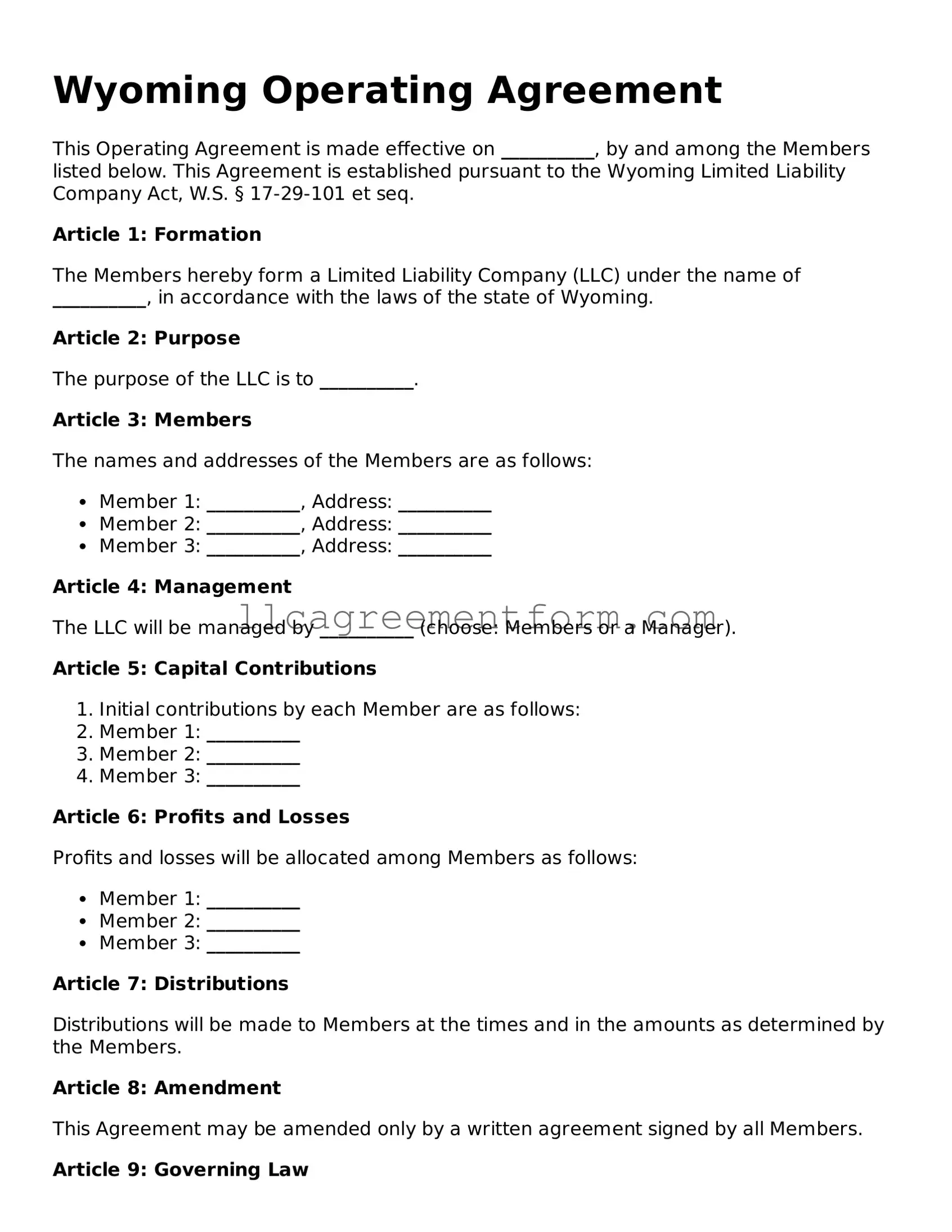Free Operating Agreement Document for Wyoming
The Wyoming Operating Agreement form is a crucial document that outlines the management structure and operational guidelines for a limited liability company (LLC) in Wyoming. This form serves to protect the interests of the members while ensuring compliance with state regulations. For those looking to establish a solid foundation for their LLC, filling out this form is an essential step—click the button below to get started.
Get Operating Agreement Now
